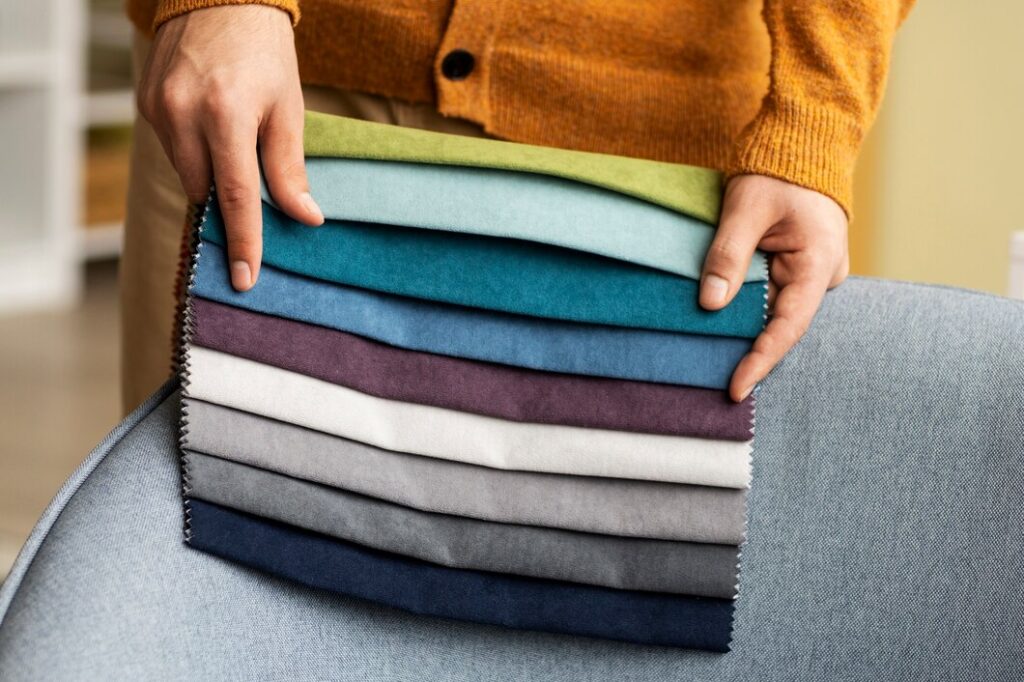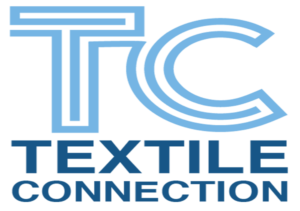Home Textile Fabrics Manufacturers Sourcing
Home Textile Fabrics Manufacturers Sourcing

As a Home Textile Fabric sourcing company, we collaborate with advanced manufacturing and printing mills that specialize in producing premium-quality knit and woven fabrics tailored for the home textile industry.
Our high-quality finished fabrics are custom-made based on specific customer requirements. Our printing capabilities include a range of techniques such as reactive dyeing, pigment printing, optical white, and vat dyeing, among others.
We have successfully positioned ourselves as a leading exporter and supplier of fabrics, serving diverse markets across North America, South America, Europe, Australia, Africa, Central Asia, the Middle East, and Southeast Asia.
Institutional Fabric Sourcing for Hotels, Hospitality, and Hospitals
1. Fabric Types
- Common Fabrics: Hotels and hospitals commonly use cotton, polyester, and blended fabrics for bedding, upholstery, and uniforms.
- Luxury Fabrics: Silk, linen, and wool are often chosen for their premium feel and aesthetic appeal, particularly in high-end hotels.
2. Fabric Compositions
- Cotton: Available as 100% cotton or cotton blends with polyester.
- Polyester: Generally found as 100% polyester or a polyester-cotton blend.
- Silk: 100% silk fabrics used for luxurious draperies or bedding.
- Linen: Primarily 100% linen or blends with cotton and other fibers, known for its texture and breathability.
3. Fabric Weight and Width
- Weight: Hotel fabrics typically range from 120-300 GSM for cotton and polyester. Silk and linen fabrics are generally between 80-200 GSM.
- Width:
- US: 44-60 inches (112-152 cm) for cotton and polyester.
- Europe and Middle East: 110-150 inches (280-380 cm).
- Silk and Linen: Widths range from 110-140 inches.
4. Woven/Knitted Fabrics
- Woven Fabrics: Common weaves include plain, twill, and satin, depending on durability and texture requirements.
- Knitted Fabrics: Single jersey, rib knit, and interlock knit are used, offering stretch and comfort.
5. Bleaching and Dyeing
- Bleaching: Fabrics like cotton and polyester can be bleached with chlorine or hydrogen peroxide to enhance whiteness.
- Dyeing: VAT dyes, reactive dyes, disperse dyes, and acid dyes are commonly used for fabric coloring, depending on the material.
6. Finishing Types
- Mercerization: Cotton treatment that enhances strength and luster.
- Calendering: Smoothens fabric surface to create a polished, glossy finish.
- Flame Retardant: Fabric treatment for resistance to flames, often applied to hospital linens.
- Water-Repellent: Applied to fabrics for enhanced moisture resistance.
- Wrinkle-Resistant: Chemical treatments prevent wrinkles during use and washing.
- Anti-microbial: Helps stop the growth of microbes, beneficial in hospital settings.
7. Sustainability Considerations
- Sustainable options like organic cotton, bamboo, and Tencel are gaining popularity.
- Fabrics can also be certified by organizations like GOTS (Global Organic Textile Standard) and OEKO-TEX for environmentally and socially responsible production.
8. Cost Considerations
- Polyester and cotton blends are generally more affordable.
- Luxury fabrics like silk and linen can be pricier but are chosen for high-end hotel environments or exclusive hospital settings.
Types of Fabric Used in Hospitality and Healthcare Sectors
White Fabric
- Commonly used for bedding, towels, and linens.
- Can be bleached for a bright white or kept unbleached for a natural look.
Dyed Fabric
- Used for various textiles, including upholstery, drapery, and bedding.
- Can be dyed with reactive, disperse, or acid dyes for vibrant, long-lasting colors.
Printed Fabric
- Used for decorative elements like bedspreads, curtains, and accent pillows.
- Techniques such as digital printing, screen printing, and block printing are employed to achieve various designs.
Twill Fabric
- A diagonal weave fabric, great for heavier items like upholstery and workwear.
- Offers durability and wrinkle resistance, making it ideal for high-use settings.
Percale Fabric
- High thread count cotton or cotton blends that offer a crisp, smooth feel.
- Often used in luxury bedding and linens.
Canvas Fabric
- Heavy-duty cotton or cotton blends used for durable furniture and accessories, especially in outdoor or casual settings.
Satin Fabric
- Glossy and smooth, often used for luxury bedding and decorative elements like drapes and pillows.
Common Weaving Types in Institutional and Retail Fabrics
Plain Weave
- Strong and durable, used for bed linens and uniforms.
Twill Weave
- Creates a diagonal pattern for durability and wrinkle resistance, often used in bed linens and curtains.
Satin Weave
- Smooth and shiny, used for luxury bedding and decorative textiles.
Jacquard Weave
- Intricate patterns are woven into the fabric, used for upholstery and drapery.
Herringbone Weave
- Zig-zag pattern that adds texture and durability, typically used for tablecloths, bedding, and curtains.
Percale Weave
- Crisp and smooth with a matte finish, ideal for bed linens and pillowcases.
Additional Fabric Treatments and Finishing Types
- Embossing: Adds texture to fabric for aesthetic appeal.
- Singeing: Removes excess fibers for a smoother surface.
- Sanforizing: Prevents shrinkage during washing by pre-shrinking the fabric.
- Anti-microbial: Protects fabrics from bacteria and fungi, ideal for hospitals.
Each of these fabric types and treatments plays an important role in meeting the unique demands of the hospitality and healthcare industries, ensuring that the textiles used are not only high quality but also practical, durable, and comfortable for end users.
Quality Solutions for Every Wardrobe
As a leading wholesaler and exporter of high-quality garments, we understand the unique challenges that arise with different apparel types. Knitted and woven garments need to maintain their shape, resist fraying, and keep vibrant colors. Baby and kids’ garments must be safe, durable, and stain-resistant, while workwear requires high durability, comfort, and compliance with safety standards. We are dedicated to providing superior quality garments that meet the highest standards of safety, durability, and style to satisfy the diverse needs of our global clientele.
Frequently Asked Questions
Yes, exactly. Our target customers include known retail brands which have huge geographical expansion through different stores and online retails. Further, we have wholesalers and importers who deal in bulk quantities and provide distribution to local markets in their respective countries.
We are prominent in sourcing business. As one of the leading suppliers, our customers are widespread across:
US
UK
Germany
France
Spain
Italy
Canada
Netherlands
Australia
Greece
Belgium
Sweden
Poland
… and several more.
The factories and manufacturers we are working with are certified in:
WRAP
BCI
BSCI
SA 8000
SGS
SAI
Organic Exchange
Confidence in Textiles
GOTS
ISO
OEKO TEX
and several others certified.
Indeed. Our main customers for Apparel are based in USA and Canada. Mostly comprise of importers, major brands and wholesalers.
Yes, Textile Connection as a sourcing company works with various certified manufacturers and is committed to working in the region where we cover a vast set of countries in Apparel.
Some of the major importers of Apparel are:
- UK
- Germany
- France
- Italy
- Spain
- Romania
- Greece
- Portugal
- Poland
- Netherlands
- Bulgaria
- Switzerland
- and several others
